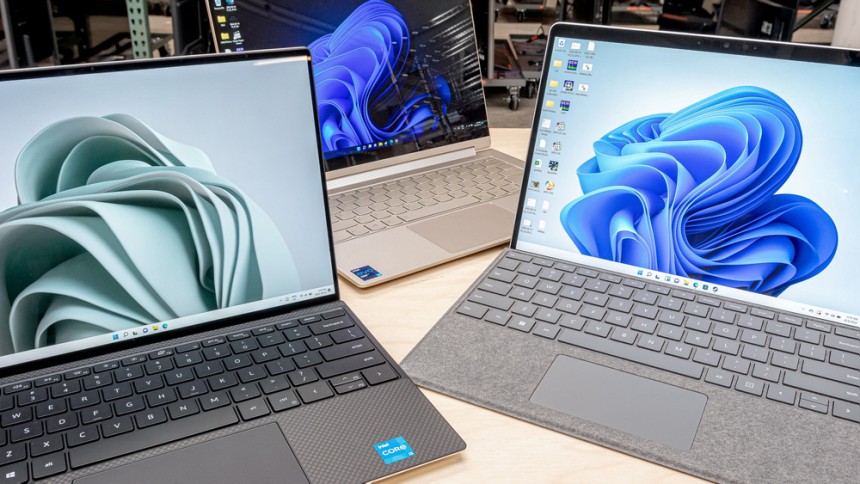
Good Practice - Ensuring Business Continuity - Computers
The Importance of Maintaining a 5 - 10% Reserve of Deployed Computers
This document is directed toward managers, department heads, and executive leadership. It outlines the importance of maintaining a reserve of 5–10% of deployed computers to protect the organization against operational disruptions caused by hardware failures, theft, or the need for immediate upgrades. This best practice is vital to ensuring continuous business functionality and minimizing downtime.
Maintaining seamless operations is a critical priority for every organization. One often overlooked, yet essential, aspect of business continuity planning is the availability of backup computing equipment. By holding 5–10% of deployed computers in reserve, companies can swiftly respond to unforeseen events such as system breakdowns, theft, or hardware compatibility issues during upgrades.
Reserve units should be fully operational and aligned with the organization’s current IT standards, ready to deploy at a moment’s notice. Failure to maintain this recommended reserve range compromises an organization's ability to continue operations effectively in the event of disruptions.
Why a 5–10% Reserve Is Critical1. Preparation for Hardware Failures
- Hardware degradation or failure is a common occurrence in any IT environment.
- With 5–10% of computers kept in reserve, replacements can be deployed immediately, minimizing downtime and maintaining productivity.
2. Response to Theft or Device Loss
- Theft, especially in mobile or remote work environments, is a growing risk.
- A maintained reserve ensures that stolen or lost units are promptly replaced without waiting for procurement.
3. Support for System Upgrades and Replacements
- System-wide upgrades often require improved hardware specifications.
- Reserve units must be capable of supporting operating system (OS) changes, increased memory requirements, or updated software installations without delay.
The Lifecycle of Business Computers
Modern computing environments, particularly those utilizing resource-intensive platforms like Microsoft Teams, SharePoint, and cloud-based portals, place significant demands on hardware. As a result:
- The typical operational life of a business computer is 3–5 years, depending on usage patterns and how well the equipment is maintained.
- Devices nearing the end of this lifecycle may struggle with the performance demands of newer operating systems and software applications.
- To maintain productivity and compatibility, it is essential that systems are replaced on a continuous refresh cycle.
Failing to regularly replace ageing systems can result in:
- Performance degradation, leading to employee frustration and reduced output.
- Increased support workload, as legacy systems require more frequent troubleshooting.
- Potential need for additional support contracts, especially when systems become obsolete or unreliable, putting extra pressure on internal IT teams.
Reserve Unit Requirements
To ensure the reserve computers can perform effectively when needed, they must meet the following criteria:
- Fully Functional: All hardware components should be operational, and the units should pass quality assurance checks.
- Up-to-Date: Devices should meet the current hardware standards in terms of processing power, memory, storage, and compatibility.
- Pre-Configured: Operating systems and essential business software should be pre-installed and configured according to company policy.
- Readiness Verified: Devices must undergo periodic testing and updates to ensure they remain deployment-ready.
Risk of Non-Compliance
Organizations that do not maintain the 5–10% reserve are at risk of the following:
- Operational Disruptions: In the event of failure or loss, delays in acquiring and configuring new systems can interrupt business processes.
- Reduced Productivity: Employees may be left without the necessary tools to perform their roles while waiting for replacements.
- Inability to Respond to Upgrades: Without compatible backup devices, planned OS or software upgrades may be delayed or stalled.
- Increased Support Burden: IT support teams may become overextended by servicing ageing or failing devices, especially if those systems are no longer supported by manufacturers.
- Threat to Continuity: Ultimately, failure to adhere to this best practice undermines business continuity and organizational resilience.
Implementation Strategy1. Assess Inventory
- Conduct a full audit of currently deployed systems.
- Calculate 5–10% of the total to determine the appropriate reserve stock.
2. Acquire Reserve Stock
- Procure reserve units during routine upgrade or procurement cycles.
- Ensure budget planning includes provision for reserve equipment.
3. Maintain and Monitor
- Store reserve units securely and perform regular hardware checks.
- Keep software images current with company standards.
- Conduct annual reviews to ensure reserve adequacy and relevance.
4. Policy Integration
- Include the 5–10% reserve requirement in IT operations policy.
- Train relevant personnel in maintaining and utilizing reserve stock.




